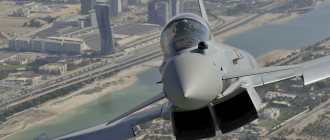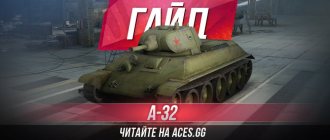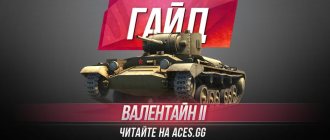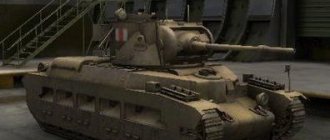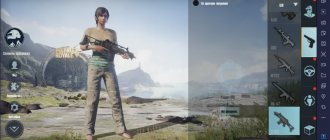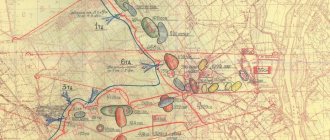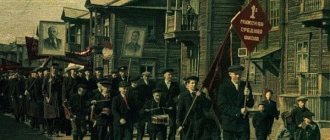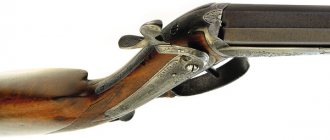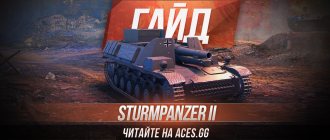Type 99 main battle tank (ZTZ-99)
The Type 99 tank is the latest derivative of the Type 90 main battle tank of Chinese military formations. It is also officially certified as a third generation combat vehicle. This program developed over a period of fifteen years from the mid-1980s and its development was quite difficult - the Chinese third generation tank suffered from certain technical shortcomings, the planned commissioning date of the tank was delayed several times until finally, after certification of type 99 approval (formerly designated as type 98 - several dozen vehicles were produced, later type 98G - from the Chinese "gai" - improved, modernized) this combat vehicle was put into production in 1998.
The Type 98 (prototype of the Type 99 tank) was first shown to the public at a national parade on October 1, 1999 - 18 tanks were demonstrated. A small number of the pilot batch of this tank model is in service with the Chinese Army for initial evaluation and testing. The initial goal of developing the Chinese third generation tank was to create a combat vehicle capable of countering the Soviet T-72, but changing realities continued the development of this tank in the direction of a more complex vehicle.
Later developments of the Type 98 (later Type 99, hereinafter referred to as Type 99) combat vehicles were aimed at countering the American Abrams tanks, and in some technical aspects the Chinese tank copies or approximately repeats some technical aspects of the American combat vehicle. It is surprising that China developed two tank models, Type 96 and Type 98 (99), almost at the same time. Although the Type 96 tank is considered a second generation tank, and the Type 99 represents the third generation of tanks, they are comparable in overall performance and technology.
One possible explanation for this seems to be that the Type 99 tank will be equipped with the most elite units of the Chinese People's Liberation Army in relatively small quantities, and the cheaper-to-produce Type 96 tanks, made using less sophisticated technology, will be massively supplied to the troops and systematically replaced Type 69 tanks are still in service in the Chinese armed forces. The appearance of the Type 99 tank was somewhat influenced by the appearance of the Soviet mass-produced T-72 tank. The control compartment is located at the head, in the center, and the engine and transmission compartment is in the stern. A complete replacement of a damaged engine can be done within 30-40 minutes in the field.
The tank's suspension is of the usual torsion bar type and has six rubber-coated wheels on each side, with a drive wheel at the rear. To accommodate additional equipment and anti-tank guns, the Type 99 tank has a slightly larger turret than the Type 90 tank, resulting in a sort of gap between the turret and the hull at the front. This can be a major disadvantage in battle, since when a shell hits this gap under the turret, there is a high probability of the turret being torn off from the rest of the tank’s hull. In addition, the design of the Type 99 tank is also not very well designed in case of penetration of a cumulative projectile through the armor. For example, there are weak spots in the internal bulkheads, and if a shell hits even the rear of the tank, the crew faces almost certain death.
The main armament of the Type 99 tank is a 125 mm caliber gun, despite early reports that this gun is a copy of the Soviet 125 mm 2A46 gun, this gun is China's own development and is essentially a derivative of the Chinese 120 mm smoothbore gun using the latest technologies. The types of ammunition presented include armor-piercing, cumulative high-explosive fragmentation shells, there is also information about the use of Russian-made 9M119 “Reflex” ATGM rounds - through this gun, in addition, the Chinese are experimenting with armor using depleted uranium. Firing accuracy is achieved through the use of a laser rangefinder, a wind sensor, a ballistic computer, and a thermal barrel casing. Dual axis stabilization ensures efficient shooting on the move.
The commander has six periscopes allowing a stabilized panoramic view. The commander also has a display of the gunner's thermal sight, allowing the commander to fire the gun without a gunner. The Type 99 is also equipped with an on-board information processing system that can collect information from GPS, surveillance systems and sensors, process it and upload it to the tank's computer, then display the information on the commander's display, allowing the commander to monitor the battlefield in real time. Medium weapons include a 7.62mm coaxial machine gun and a 12.7mm anti-aircraft machine gun mounted above the commander's hatch. Each side of the turret has five 76mm 84-barrel smoke grenade launchers. The turret and hull of the tank have an all-welded steel armor structure. A layer of composite armor was added to the front arc, the armor has a package-modular design, which allows you to quickly replace damaged sections that need to be replaced or upgraded during service, and on the frontal projection of the turret the armor is located in a “corner” position.
Reactive dynamic protection (ERA) can be installed if necessary. Unlike the Soviet (Russian) Arena system, which simply destroys anti-tank missiles and shells as they approach the tank, the Chinese system apparently uses powerful laser systems to directly attack enemy optics. The system appears to include a laser warning receiver (LWR - a mushroom-shaped device on the turret roof behind the commander's hatch), plus a quantum generator (a box-shaped housing behind the guidance hatch) - which warns that the tank is illuminated by enemy laser weapons. The tank's turret can immediately be turned towards the enemy. The operation scheme of a laser weapon is as follows: a low-power beam is used to find the optics of an enemy tank, after finding the enemy’s optical instruments, the power level of the laser weapon immediately and sharply increases, such a massive attack on the optical instruments of a potential enemy not only disables them, but also often greatly damages the vision of the opponent's tank gunner.
Available photos of the Type 99 tank (on the website page) also confirmed that the laser weapon can be raised to a higher angle than the tank's cannon, which probably indicates the possible use of this system against enemy helicopters, in addition, this laser device can also be used for communication between friendly tanks and armored vehicles in battle.
Tactical and technical characteristics of the main battle tank "Type-99"
| Combat weight, t | 54 |
| Crew, people | 3 |
| Overall dimensions, mm: | |
| length with gun forward | 10920 |
| width | 3372 |
| height | 2200 |
| clearance | 470 |
| Armor, mm | |
| rolled and cast steel and multi-layer combined, projectile-proof | |
| Weapons: | |
| 125 mm smoothbore gun, machine guns: 1 × 12.7 mm “W-85”, 1 × 7.62 mm “Type 86” | |
| Ammunition: | |
| Gun: 41 of which 22 in the automatic loader | |
| Engine | diesel MB871ka501, liquid cooled with turbocharging with a power of 1500 hp, created using technologies obtained from Germany (on the prototype type 98 - engine power 1200 hp) |
| Highway speed, km/h | 80 |
| Cruising range on the highway, km | 450 (700 - with external tanks) |
| Obstacles to be overcome: | |
| wall height, m | 0,85 |
| ditch width, m | 2,7 |
| ford depth, m | 1.4 (with OPVT - 5) |
Modifications:
- Type 99 (ZTZ-99) - the first production modification.
- Type 99G (ZTZ-99G) - a new sighting system and active protection system.
- Type 99A (ZTZ-99A) is the next production modification.
- Type 99A1 (ZTZ-99A1) - modernized built-in dynamic protection.
- Type 99A2 (ZTZ-99A2) - new dynamic protection, combat information and control system, active protection complex with millimeter-wave radar, new sighting system and integrated motion control system.
Sources:
- Christoper Chant "World Encyclopedia of the Tank";
- G. L. Kholyavsky “Complete encyclopedia of tanks of the world 1915 - 2000”;
- Christopher F. Foss. Jane's Directories. Tanks and combat vehicles";
- Philip Truitt. "Tanks and self-propelled guns";
- Chris Shant. “Tanks. Illustrated Encyclopedia".
| Next > |
How are Chinese armored vehicles different?
Over the past 50 years, Chinese tank building has come a long way in development, strengthened its position in the world, and now the design school and production capacity are at a high level. Some modern models of military equipment produced in the PRC are on a par with armored vehicles produced by defense enterprises of the Russian Federation and America, and some surpass their Western counterparts in tactical and technical characteristics.
The advantage of China's defense industry is that the state has the resources to increase defense spending relative to GDP.
MBT – 2000
The third generation main battle tank was the result of joint work with Pakistani engineers. The Chinese 90-II was used as a prototype. The MBT-2000 became the export version of the type-96 production tank.
The first version was released from the assembly line in 1991 and was aimed at testing, which simultaneously took place in two countries. Only in 2000, the first batch of vehicles was accepted into the balance of the Pakistani army. As a result of the modification, the equipment was as follows:
- the diesel engine was adapted to work in hot climates;
- maximum speed: 65 km/h;
- Fuel range: 550 km;
- armament: 125 mm cannon and two different-caliber machine guns.
Soviet engineering developments from the most popular T-72M tank were used in the chassis of the vehicle. It is due to the use of the engine that this tank receives a visible advantage over other models, and Bangladesh purchases these vehicles on favorable terms.
Type-80
The Type-80 tank was developed by engineers in 1982 on the basis of the Type-79 model. It has an updated chassis design with hydraulic shock absorbers on the road wheels. The main differences were:
- turbocharged diesel engine to increase the tank's mobility in battle;
- rubber side screens;
- fire control system with telescopic sight;
- 105 mm cannon and two machine guns of 7.62 mm and 12.7 mm caliber.
The ammunition includes unitary shells produced by China at its own factories under licenses from well-known companies.
This combat vehicle is in service only with the Chinese Liberation Army and various modifications of tanks were created on its basis.
MBT – 3000
The first prototype of the new MVT-3000 combat vehicle was released in 2012. The development of the model was based on early successful tank models.
Visually, the tank resembles previous models. Features of MVT-3000:
- diesel engine 1200 hp;
- built-in dynamic protection, consisting of three types of armor;
- main weapon: 25 mm launcher with guided missile launch function;
- The tank's ammunition load consists of 38 shells;
- updated digital hunter-killer fire control system.
The MVT-3000 tank, designed by Chinese designers, is a competitor to the Russian model of the T-90S tank and is produced not for the needs of the PRC’s own army, but for export to third countries.
Type-88
The photo shows the main second-generation combat vehicle Type-88. It was developed in 1982. When strengthening the hull, significant changes took place with multi-level armor in the frontal part - its thickness increased to 203 mm. Model features:
- 105-mm rifled cannon with a telescopic sight, machine guns of two calibers, smoke grenade launchers - 8 pcs.;
- The diesel engine has a power of 730 hp. With.;
- reaches speeds of up to 60 km/h;
- Cruising range on one fill: 430 km.
There is a radio station and intercom on board to ensure high-quality communication.
WZ-111
The WZ-111 heavy tank was intended to be a copy of the Soviet T-10, which was considered the pinnacle of heavy tank building in the USSR. Additional armament consisted of a machine gun and a coaxial anti-aircraft gun. The crew was supposed to consist of 4 people, three of whom were supposed to fit in the tower
The model had a lot of disadvantages:
- the torsion bar suspension could not withstand the total weight of the tank, which was 49 tons;
- the fighting compartment turned out to be inferior due to the cramped turret;
- due to the impressive size of the breech of the gun, the internal filling of the turret was not assembled;
- the armor had low rigidity, which negatively affected the strength of the hull.
Due to the insufficient experience of Chinese designers, the idea of developing a heavy tank based on the developments of the past was a fiasco. The car did not pass tests, and in 1960 the project was closed. What it could have been like can only be judged from archival photos.
Type-98
The third generation armored vehicle was created by the Chinese engineering corporation FIRMAKO in the 90s. Structurally, the model resembles the main Russian tank T-72. In 1998, serial production was launched, and about 100 units of cars were rolled off the assembly line. The first demonstration of the tank took place in 1999 in Beijing during a military parade in honor of the 50th anniversary of the People's Republic of China.
Model features:
- ammunition load: 42 charges;
- efficiency: 8 shots/min.;
- thermal imager system for shooting in desert conditions;
- crew: 3 people;
- reaches speeds of up to 75 km/h.
The main feature of the Type-98 tank is the introduction of the new JD-3 laser system on quantum generators, designed for active protection.
Jaguar
A Chinese-American main battle tank that was planned as a low-cost export model for third countries. The prototype for the Jaguar model was the Type-59 and the legendary Soviet-made T-55. The work of the design team started in the mid-80s, and the following equipment was manufactured for the car:
- diesel engine from Detroit Diesel 8V-92TA with an effective power of 750 hp;
- support rollers with rubber tires;
- tower from the Cadillac Gage concern;
- M68 105mm rifled gun;
- thickened armor.
The use of a large number of American-made components made it impossible to produce the Jaguar tank after the US-China business partnership was severed. In 1990, the project ceased to exist, and the result of the work never saw the light of day.
Type-62
The Type-62 light tank was developed in China in the 60s. The purpose of its creation was to carry out combat missions in difficult, difficult terrain and for use in amphibious operations. Today, the type-62 combat vehicle model is used by the armed forces of Albania, Mali, Congo, Vietnam and other countries. This model is also produced for the needs of the People's Republic of China.
During the production of the tank, the Type-59 model became the prototype. The combat weight was reduced by half and is 20.5 tons. Model features:
- the control compartment is located in the bow;
- in the stern there is an engine compartment;
- the hull is made of armor reaching 35 mm in thickness, and on the turret up to 50 mm;
- armament includes an 85 mm cannon without a stabilizer, 7.62 mm guns - 2 pcs.;
- after the shot, the barrel is purged by an ejector;
- the effective shot range reaches 1.9 km;
- ammunition includes 47 shells;
- frequency of shots per minute: 3-5.
As practice has shown, the firepower of a combat vehicle is not enough for a full-fledged battle, and the tank’s armor is too vulnerable to hand grenade launchers.
